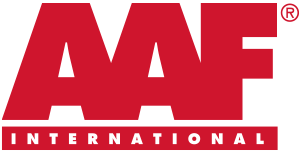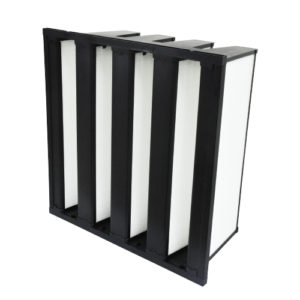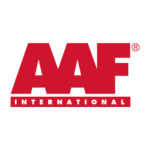Background
Previous testing undertaken by a University of Minnesota research team, later replicated by AAF Flanders in our biological research laboratory at the Clean AIR Center, demonstrated that air filtration reduced not only airborne particles within the 0.5-1.0 micron size range that viruses tend to travel on, but also the virus particles themselves. For this study, the university researchers used the Porcine Reproductive Respiratory Syndrome (PRRS) Virus as the test organism for the bioaerosol tests. Because the PRRS virus studied previously is much smaller and behaves differently than the new coronavirus that causes COVID-19, AAF Flanders researchers sought answers to the question:
Could a member of the coronavirus family also be filtered out of the airstream?
Because SARS-CoV-2, the coronavirus that causes COVID-19, is highly infectious to humans, our biological research team tested penetration rates for various air filters using the Porcine Epidemic Diarrhea (PED) virus as a surrogate.
Like SARS-CoV-2, the PED virus:
- Is a member of the coronavirus family
- Is of similar size
- Behaves similarly in aerosol
Fortunately, however, the PED virus is not known to infect humans, making it a safe surrogate for the AAF research trial.
Our Facilities
Opening in 2016, the AAF Flanders Clean AIR Center (CAC) boasts 39,000 square feet of space that houses our media and materials lab, an ABSL-2 biosafety research lab, five certified ASHRAE 52.2 test ducts, and a UL-certified test duct. The unique combination of biosafety capabilities and ASHRAE test ducts positions AAF Flanders as the worldwide leader in air filtration innovation, allowing us to test our air filters for removal of airborne pathogens, such as bacteria and viruses. These capabilities of the CAC make AAF Flanders the only filtration company able to replicate the University of Minnesota research that demonstrates that particle efficiency corresponds to viral removal.


Methodology
We used essentially the same methodology as was used with the PRRS-V testing performed previously, but at higher rates of airflow (1968 CFM, as commonly used for ASHRAE 52.2 testing, rather than 650 CFM) and substituted the PED vaccine for the PRRS-V vaccine.
- First, we created an aerosol containing 10% Potassium Chloride (KCl), a fluorescent tracer dye to determine particle distribution by mass, and a PED vaccine with a virus concentration of 108 (or 100 million).
- The KCl was generated at particle sizes corresponding to a typical ASHRAE test size range, 0.3-10 micron, along with some larger sizes.
- That aerosol was introduced into an ASHRAE test duct and drawn through individual air filters at 1968 CFM, while keeping temperature, humidity, and other parameters at ASHRAE 52.2-prescribed levels.
- We collected air samples before and after each filter with an Anderson Cascade Impactor, which separates and collects particles by size.
- We then analyzed the collected samples. First, we isolated and purified the virus in each sample. The purified virus in the samples was prepared for testing using Reverse Transcription Polymerase Chain Reaction (RTPCR) where the data generated was used to determine virus concentration per cubic meter of air. Last, we quantified the overall particle distribution by mass as a positive test control.
- Using this viral concentration data, we calculated the penetration and viral efficiency rates for each filter vs. individual particle sizes.
- The resulting data is shown on the tables included in the remainder of this document.
***This methodology is based on previous successful virus capture methodologies utilizing comparisons between standard ASHRAE 52.2 and predictive analysis based on virus carriers. The filter is only one component and the overall system and the test results should be viewed as directional depending on the complete HVAC environment.
Conclusion
Yes, the percentage of airborne coronavirus-carrying particles reduced by air filtration correlates with particle efficiency.







